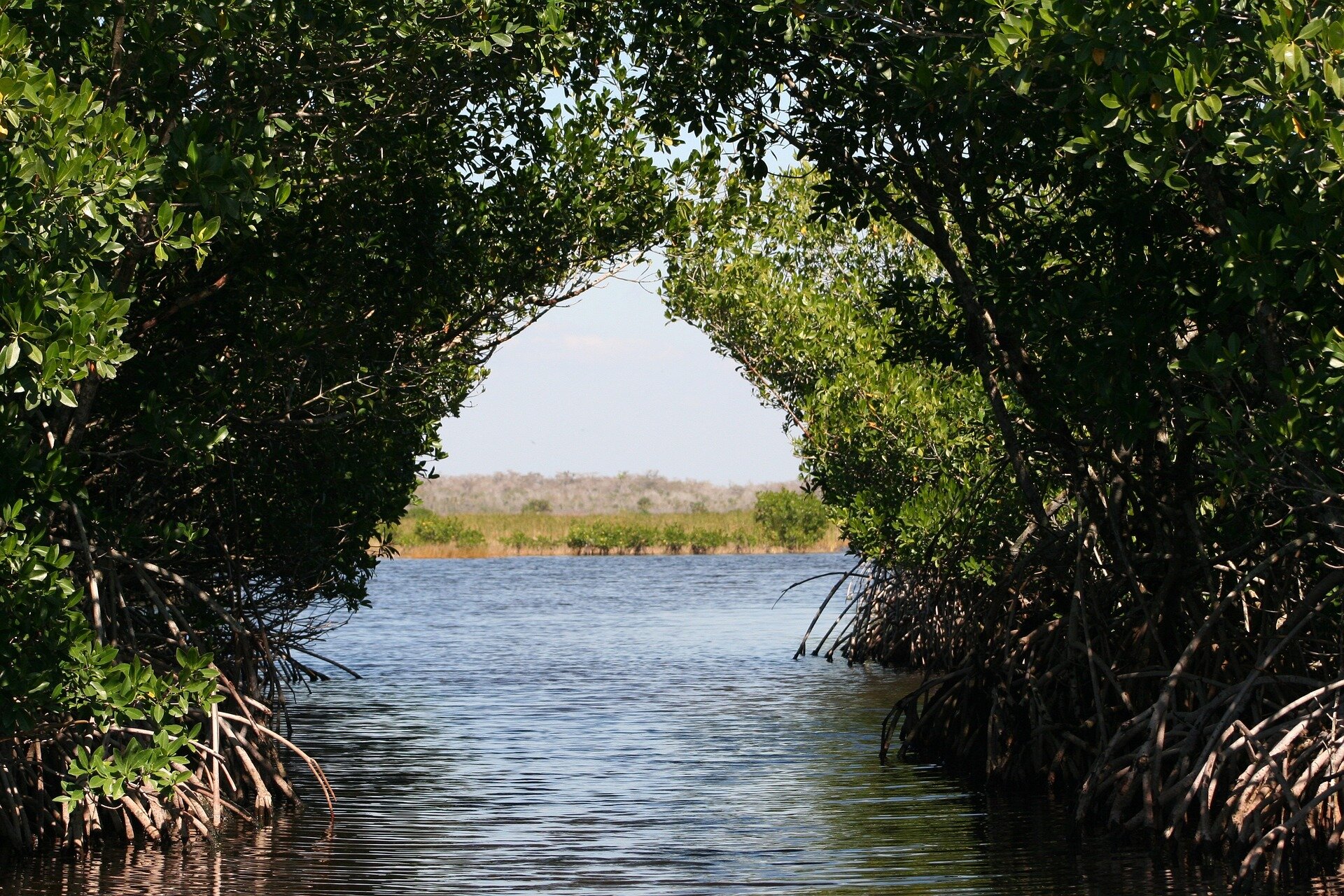The primary cause of climate change is excess greenhouse gases, such as carbon dioxide, in the atmosphere. Combating climate change in the coming years will require both decarbonization and carbon dioxide removal. Researchers at the Georgia Institute of Technology and Yale University have proposed a novel pathway through which coastal ecosystem restoration can permanently capture carbon dioxide from the atmosphere. Seagrass and mangroves, known as blue carbon ecosystems, naturally capture carbon through photosynthesis, which converts carbon dioxide into living tissue. Restoring these ecosystems could potentially benefit local flora and fauna, help to energize coastal economies, and remove additional carbon through a novel pathway while combating increasing acidity in the ocean.
Carbon Cycling
There are two major types of carbon that cycle through the Earth’s system: organic carbon and inorganic carbon. Organic carbon is contained in living matter and can remove carbon dioxide from the atmosphere temporarily. If it becomes buried in sediments at the sea floor, it can lead to permanent carbon dioxide removal. Inorganic carbon can be found in many forms, including rocks and minerals, but is present as a significant dissolved component of ocean water. Roughly 30% of the carbon emitted by human activities since the Industrial Revolution is now stored as dissolved inorganic carbon in the ocean. Carbon dioxide removal by inorganic carbon is potentially much more durable than carbon dioxide stored as organic carbon, which can be disrupted, redistributing carbon dioxide back into the atmosphere.
Alkalinizing Ocean Waters
Another major result of human fossil fuel use beyond climate change is ocean acidification from carbon dioxide in the atmosphere dissolving in the water and driving down the pH of the ocean, which can have severe, negative impacts on many organisms like corals. Storing carbon dioxide as inorganic carbon in the ocean could help mitigate this, because the chemical processes that lead to carbon capture as inorganic carbon involves alkalinizing ocean waters. By shifting the acid-base balance of the ocean, the process can help to partially offset the negative ecological consequences of ocean acidification.
Restoring Coastal Ecosystems
Coastal ecosystems naturally remove carbon from the atmosphere and provide a range of environmental and economic benefits to coastal communities. However, many human interventions have caused extensive degradation or destruction of natural coastal environments. Planting more mangroves and seagrasses, maintaining them, and protecting the overall ecosystem can restore their functioning and lead to additional carbon removal from the atmosphere. Past research has focused on carbon removal through organic carbon burial and has not explored the potential for carbon removal through the formation of inorganic carbon. To explore how effective restoring coastal ecosystems could be for inorganic carbon capture, the researchers built a numerical model to represent the chemistry and physics of sedimentary systems. The model specifically tracks the potential benefits of restored mangrove or seagrass ecosystems and their impacts on organic and inorganic carbon cycling. It also calculates the effects of other greenhouse gases, such as methane, that can sometimes be created in the process of restoring mangrove and seagrass ecosystems. The researchers found that across an extremely large range of scenarios, restoration of blue carbon ecosystems leads to durable carbon dioxide removal as dissolved inorganic carbon.
The team hopes this research could provide an impetus to protect current coastal ecosystems and economically incentivize restoration of degraded ecosystems, potentially as a new form of carbon offset. Companies that are trying to offset their own emissions could potentially purchase carbon removal through funding restoration of coastal ecosystems. This could help rebuild these ecosystems and all of the environmental benefits they provide while leading to durable carbon dioxide removal from the atmosphere.


Leave a Reply